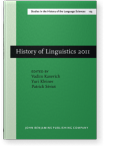Semantics as a background for (pre)semiotic trends in Russian intellectual history of the 1920s–1930s (and beyond)
Interpreting semiotics as a science concerned with signs and as a synthesis or a dialogue between various branches of knowledge permits distinguishing two trends in the (pre)history of Russian semiotics, in the 1920s–1930s. Representatives of both of these branches took a great interest in semantics. The search for semantic universals and the study of word semantics in the light of connections between linguistics and other disciplines were distinctive features of Marrist semantics. Researchers who had never adhered completely to Marrism (R. O. Šor, V. N. Vološinov, G. G. Špet) were also interested in semantic studies. Some of them not only aspired to a synthesis of various disciplines, but also reflected upon signs. In contrast to aspirations for a “holistic science”, almost all reflections on signs as such were forgotten for a long period after the death of these scholars. This determined the particular orientation of Russian semiotics in the second half of the past century.
